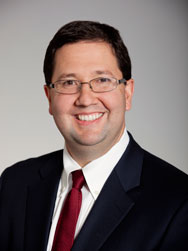With reports of Philadelphia Eagles quarterback Carson Wentz’ season-ending ACL (anterior cruciate ligament) tear, there is renewed focus on this type of sports injury. Unfortunately, this type of injury is common in athletes and non-athletes alike.
First, it is important to understand what the ACL is and how it functions. The ACL is a band of tissue within the knee joint that functions to stabilize the knee during certain activities. Jumping or quick changes in direction can put a tremendous amount of force on the ACL. It is not uncommon to tear the ACL during these types of high demand activities, usually during sports. It has been estimated that there are around 200,000 ACL injuries in this country every year – among amateur athletes and weekend warriors and professional athletes alike. Many people with these injuries are treated with ACL surgery.
Although the ACL is an important stabilizing structure, until recently there was not an effective surgical treatment. The initial non-operative treatment of casting and rehabilitation does not reliably return patients to their previous level of function. Attempts were then made to repair, or stitch the torn ends of the ACL back together. These repairs did not tend to hold up over time. It was thought that the ends failed to heal with each other because of the effect of the joint fluid—the vital, lubricating, and nourishing liquid that is normally found in joints. Treatment evolved into a reconstruction, where the ACL is replaced with tissue from the same patient or from a cadaver graft. This tissue is typically a strip of patellar tendon, hamstring tendon, quad tendon or Achilles tendon. For several decades, this reconstruction of the ACL has been the gold standard and has been fairly reliable in returning patients to their previous level of function.
Reconstruction does have some downsides. There is some increased pain and problems associated with harvesting the graft used for reconstruction. Findings of arthritis are common in the knee in the years following the reconstruction. Work is constantly being done to see if there is a better way to treat ACL tears.
A group from Boston Children’s Hospital is experimenting with a new technique. Instead of reconstructing the ACL using a tissue graft, they are using a blood soaked sponge to augment a direct repair of the ligament. The hope is that the sponge and the healing factors within it can help the torn ends of the ligament heal to one another, hopefully solving the problem that prevented previous direct ACL repair techniques from being successful. Early results are reported to be promising, but patients need to be followed and evaluated for a number of years before the effectiveness of this new technique can be adequately judged.
While it is impossible to prevent all injuries related to exercise or physical activity, many can be avoided by taking some precautions. For weekend athletes or for those starting on an exercise program for the first time, check with a doctor or an athletic trainer.

Mark Pollard, MD
Assistant Professor of Orthopaedic Surgery
Cooper Medical School of Rowan University
Cooper Bone and Joint Institute
